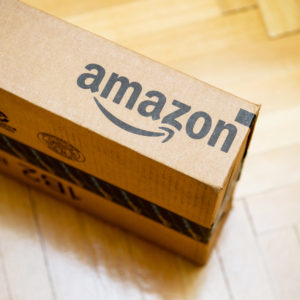Bloomberg recently uncovered troubling data regarding Amazon Prime’s same-day delivery service. It found that predominately black neighborhoods in six major U.S. cities – including the Washington, D.C. metro area – inexplicably do not have access to same-day delivery from the self-described “everything store.”
For instance, Amazon’s same-day delivery service is available in the affluent Georgetown zip code lined with trendy stores, yet in the lower-income Anacostia zip code — where you are much more likely to find a poorly stocked dollar store — the service is not available. This disparity is concerning considering those in traditionally underserved areas like Anacostia are the same places that stand to benefit the most from Amazon’s array of products and discounted prices.
Amazon is not the only big tech company with a terrible record when it comes to diversity – just take a look at minority hiring numbers in Silicon Valley. It’s a big issue that spans from workforce diversity to practices and policies that impact access to tools and services that are necessary for consumers to have as the mobile revolution rages on.
Although the discovery made by Bloomberg is troubling on a number of levels, it also helps to highlight the point that diversity is a large and complex topic that encompasses many practices and policies geared towards promoting stronger inclusion for companies’ employees and customers alike. Typically, these types of policies are addressed internally when diverse leadership is present and has input into corporate operations as opposed to through the media and external pressure after the fact.
As our world becomes increasing mobile, expanding access to mobile tools and services in minority and underserved communities is paramount in curtailing the digital divide in the U.S. According to new data from the National Telecommunications and Information Administration (NTIA), low-income households are nearly twice as likely to rely solely on mobile Internet service at home, and according to Pew Research, minority users are three times as likely to be dependent on a mobile device for Internet access.
While the tech industry at-large continues to struggle with diversity, there is one bright spot coming from companies such as AT&T, Verizon, and T-Mobile through their free data programs. These new programs allow consumers to access “sponsored content” that doesn’t impact their data usage or result in additional costs because content providers and others are covering it. This concept may be new to the mobile space, but it’s one that consumers have benefited from in other areas – such free Wi-Fi on airplanes, toll-free calling, and validated parking.
Given that access to mobile technology is essential and data use is going nowhere but up, free data programs should be especially welcome news to minority and low-income consumers that disproportionately rely on mobile devices like smartphones to get connected. In fact, the Multicultural Media, Telecom and Internet Council (MMTC) recently released a paper highlighting how free data programs stand to help close the digital divide, bolster the user experience and further empower mobile users.
However, some so-called consumer groups and net neutrality advocates in Washington want to ban these programs, claiming they violate the spirit of the Federal Communication Commission’s (FCC) net neutrality order. Even though a recent survey from CTIA – The Wireless Association found that consumers overwhelmingly support free data programs, opponents think they know what is best for consumers. The FCC shouldn’t ban free data programs. If anything, it should embrace them and encourage more programs that will make mobile technology more accessible.
The bottom line is this: We have a digital equality issue in the U.S., and as a result, we certainly should not suppress innovative ideas or business models from companies that stand to help bridge this gap. Regulators, special interest groups, companies, and consumers should all be encouraging these types of innovative ideas and let consumers decide their fate.

